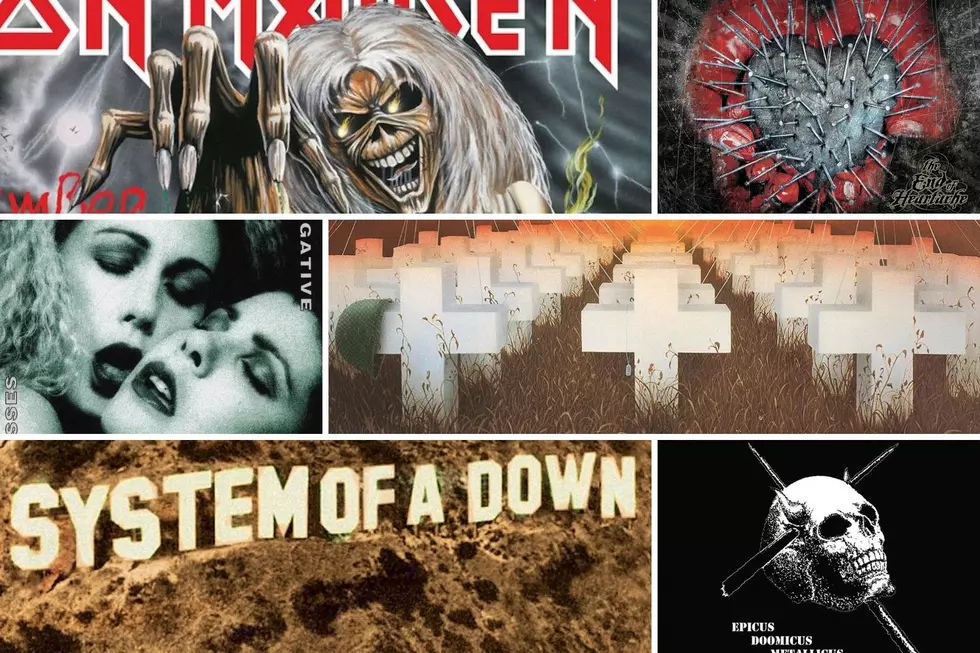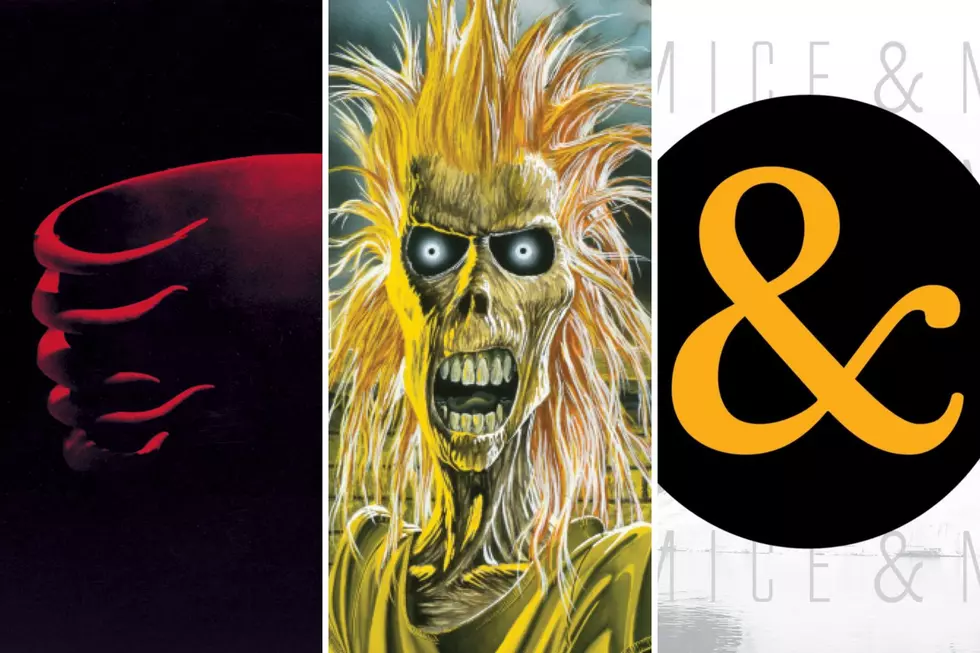
48 Years Ago: Judas Priest Begin Shaping Traditional Metal on ‘Sad Wings of Destiny’
Happy anniversary to Judas Priest's Sad Wings of Destiny.
“You could always hear where we lived — the foundry, the big steam hammers. It was part of the Midlands you could always hear that, so I suppose really if day after day when that’s pounding you’ve got some sort of heavy metal rhythm inherent in you right from the word 'Go.'” Guitarist Glenn Tipton's words rang true on March 23, 1976 as Judas Priest released their sophomore album, the masterful Sad Wings of Destiny.
An improvement upon the Rocka Rolla debut, the band forged a more cohesive sound on Sad Wings of Destiny. While not entirely bidding farewell to the blues and psychedelia fingerprints that dominated the predecessor, they began falling out of favor as heavier rhythms and stronger twin melodies helped pave the way for the still malleable heavy metal genre.
Carrying leftover tracks from the first session in their back pockets, Judas Priest took "Tyrant," "Genocide" and "The Ripper" into Rockfield Studios in November of 1975 along with more music already fleshed out and ready to record.
The songs were cast aside by Rocka Rolla producer Rodger Bain and the band sought out Max West and Jeffrey Calvert, who had just scored a hit pop single with the band's label home, Gull Records. The record would also be the only one to feature drummer Alan Moore, who had enjoyed a brief stint with the band in an earlier incarnation.
Judas Priest, "The Ripper"
The independent label matched the recording budget from the first record, a mere £2,000 for Priest to lay down what would become one of metal's most revered and influential albums and, arguably, the first true bona fide traditional heavy metal album. For comparison, the band would go on to receive a £60,000 advance when signing with CBS for their next record.
With the members of the band unable to live off their income as musicians, they took up day jobs and got by on just one meal a day. Glenn Tipton took up being a gardener while other axeman K.K. Downing headed out to a factory and bassist Ian Hill worked as a delivery man.
Pulling together two old songs, Priest's "Whiskey Woman" (written with original singer Al Atkins) and "Red Light Lady" from singer Rob Halford's previous band Hiroshima, the group molded the indomitable "Victim of Changes." Employing a churning rhythm that was just as effective when turned down to allow Halford's croon, the seesawing tempo, dynamic vocal performance and complex arrangement immediately put them into the same echelon reserved for bands like Black Sabbath and Deep Purple.
Judas Priest, "Victim of Changes"
Following the now Priest classic that has stood tall for four decades came "The Ripper." A concise, yet devastatingly effective track that further played with clever arrangements and sudden and arresting tempo changes.
Returning to the more ballad-like side hinted at on "Victim of Changes," the album enters a haze on "Dreamer Deceiver," complete with some of Halford's most ear-piercing falsettos. Meanwhile, the fog is quickly lifted on the following track, the rhythm-heavy, Sabbathian "Deceiver." These two songs were performed in front of a live audience on the BBC Two's The Old Grey Whistle Test in 1975.
Judas Priest, "Dreamer Deceiver"
Still enduring the identity crisis that would not plague them for much longer, Judas Priest took the stage decked out in traditional '70s garb, including high-heeled boots and flowing shirts.
“It was funny because in those days they at the BBC had got very set ideas as to how loud you should be, really," recalled Tipton [via Metal Works '73 - '93 documentary]. "And I always remember when we did the Old Grey Whistle Test first they were literally walking around to the audience and giving them earplugs to start with. There was a limit to how high we could — we couldn’t go up to 11, it was about four. Of course, trying to play heavy metal without the volume to get the sufficient sustain on the guitars which when you — it was that simple, you either turned down or you couldn’t perform in those days.”
Sad Wings of Destiny boasts one of the most recognizable album covers in Patrick Woodroffe's Fallen Angels. Depicting an outstretched angel surrounded by flames on the ground, the band's trident emblem made its first appearance hanging from the angel's neck. The original Gull pressing inverts the two sides of the record on the sleeve with Side A beginning with "Prelude" and Side B kicking off with "Victim of Changes."
Following the release of Sad Wings of Destiny, the band consciously decided to break their contract with Gull to sign with CBS. Knowing this meant forsaking their rights to the songs as well as revenues, (they would later reclaim copyright ownership of these songs) it was a move made out of necessity. Little did Judas Priest know that they had just created a heavy metal masterpiece.
"I have to say Sad Wings of Destiny is my personal favorite; I really love that album," Halford told OC Weekly. "It has a lot of good things going for it, and it's an important album for us as a band and for heavy metal music in general. It's just a very solid and representation of a lot of the best of Priest: the riffs, the tempo the songwriting and vocals. It still stands the test of time and is one of my personal favorites to this day, but that doesn't mean I don't love our other works."
Judas Priest Albums Ranked From Worst to Best
Gallery Credit: Joe DiVita
More From Loudwire









